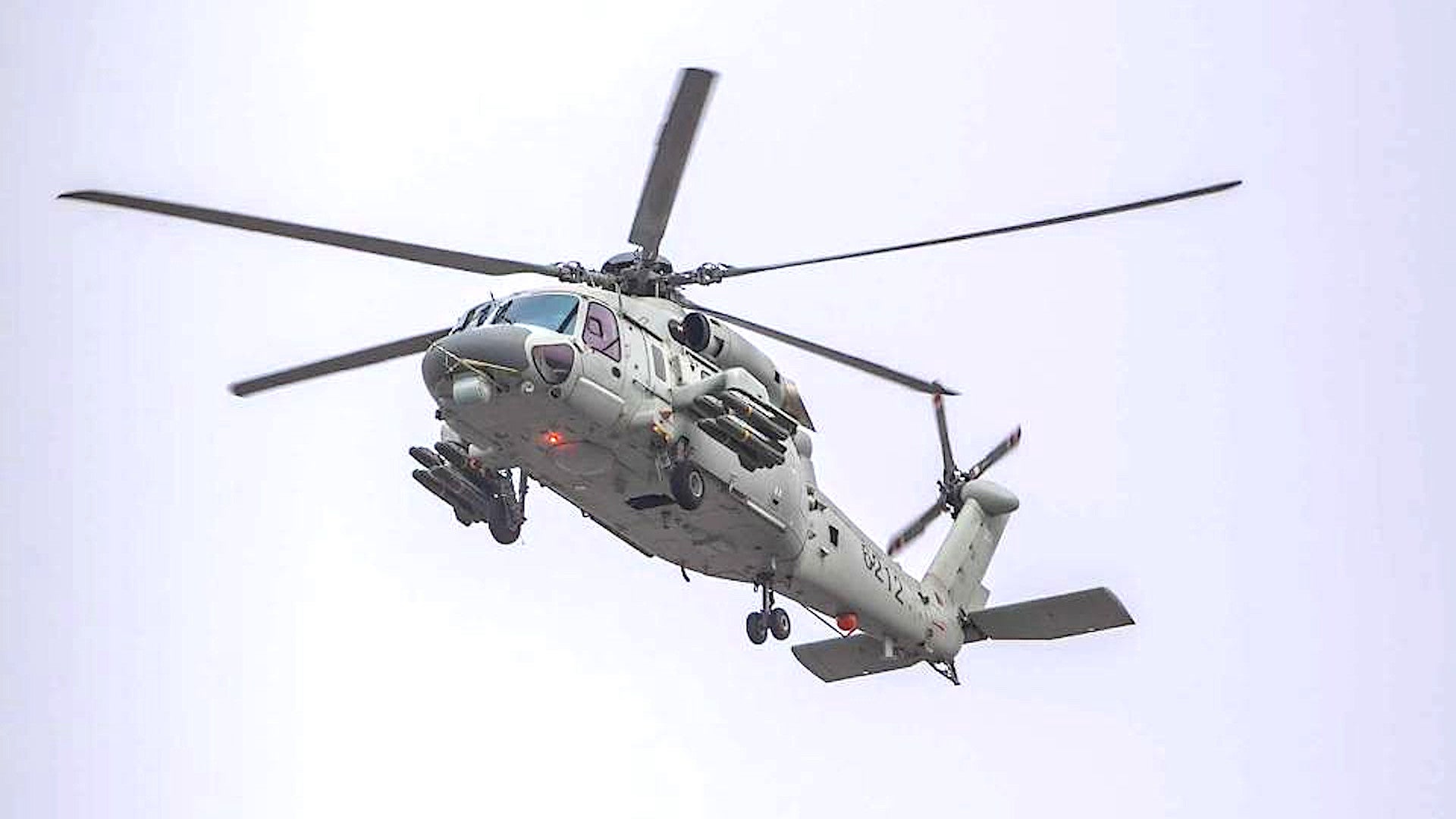A new, much clearer picture has emerged of a Chinese Z-20F helicopter, the navalized variant of the Harbin Z-20, carrying what appears to be a load of eight live KD-10 air-to-ground/surface missiles. The image confirms that China is evaluating at least two different stub wing designs for the Z-20 family, which are generally described as clones of the Sikorsky H-60/S-70 series. This would mirror the development of different external stores systems for Sikorsky’s Black Hawk and Seahawk helicopters.
The photograph of the armed Z-20F originated on the Chinese microblogging website Weibo and has since begun to appear on other social media platforms. The picture shows the helicopter carrying four KD-10s on each of its two stub wings, one of which is fitted to each side of the fuselage.
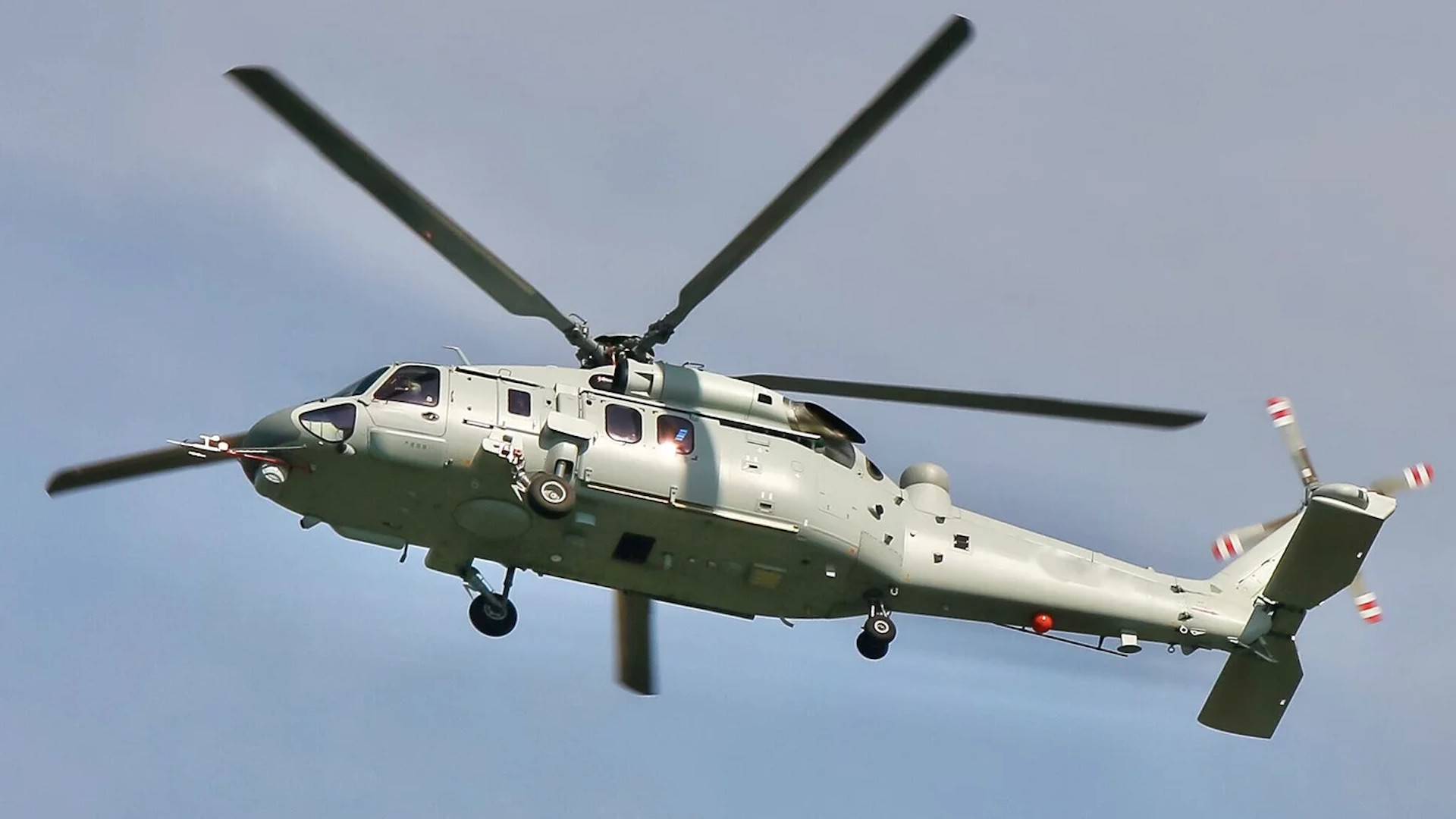
The missiles are painted black or very dark green and have what looks to be a yellow band around the center of their bodies, which typically indicates the presence of a live high explosive warhead. The helicopter also has an air data probe, used during flight testing, fitted under the nose.
The stub wings are distinct from the ones that were seen on a standard Z-20 in a picture that emerged on social media in December. The external stores system on that helicopter appeared to have a total of four pylons, two on each side, with bulbous fairings on the outside edges out the outboard ones. The stub wings on the Z-20F in this new picture only look to have space for one pylon on each side and lack the fairings. The stub wings on this Z-20F are also mounted lower on the fuselage compared to ones seen on the Z-20.
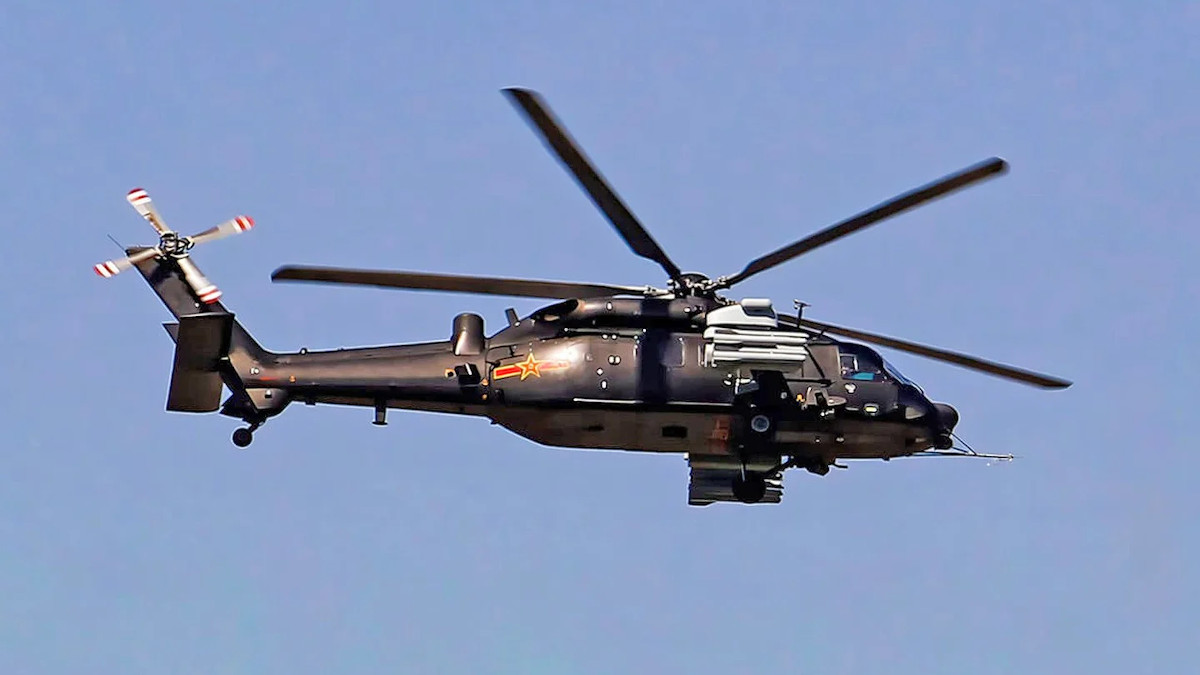
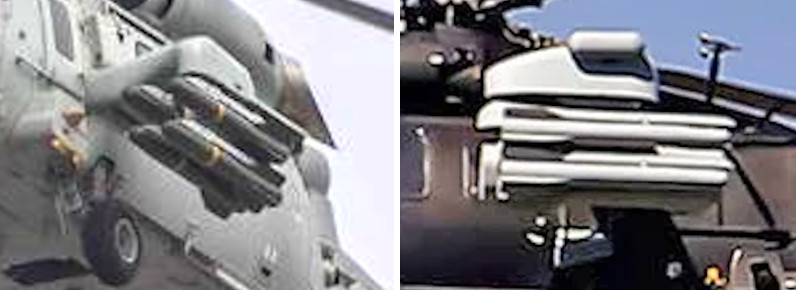
All told, the Z-20Fs stub wings look very similar to stub wings available for the MH-60R, as well as a number of other Seahawk variants, which are in service with the U.S. Navy and other naval forces around the world. In U.S. Navy service, MH-60Rs generally carry variants of the AGM-114 Hellfire air-to-ground missiles, but they can accommodate other stores, as well, including pods capable of firing 70mm laser-guided Advanced Precision Kill Weapon System II (APKWS II) rockets.
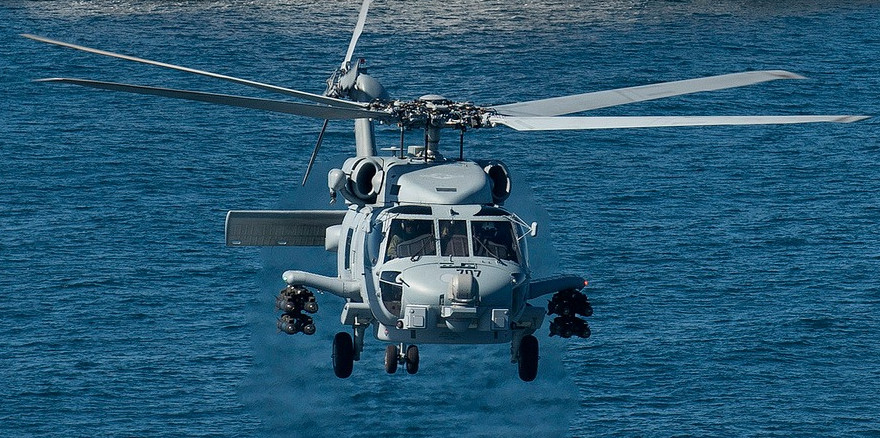
With these weapons, the U.S. Navy MH-60Rs typically provide force protection, especially for higher-value ships, such as aircraft carriers and amphibious assault ships, against the threat of small boat swarms. With the People’s Liberation Army Navy making significant progress on expanding its own carrier and amphibious warfare ship fleets, it’s not surprising that it is looking to be able to equip its Z-20Fs for a similar mission. The KD-10, originally developed for the Z-10 attack helicopter, is broadly analogous to the AGM-114 and would be well suited to this role in combination with China’s Seahawk clone.
Z-20Fs carrying weapons like the KD-10 could also provide for added fire support during amphibious operations, as well as for special operations forces during raids on land or at sea.
There is also the possibility that these stub wings for Z-20F, or even more robust designs that may be forthcoming, could carry other kinds of munitions to engage a wider array of maritime threats. For instance, it would make sense that a naval version of this helicopter would be adapted for the anti-submarine role with air-dropped torpedoes.
Arming the Z-20Fs with relatively small anti-ship cruise missiles could be another option. India is notably in the process of acquiring MH-60Rs that will be able to carry an air-launched version of the Norwegian-designed Naval Strike Missile (NSM), a capability that is also being marketed to other Seahawk operators worldwide.
No matter what, China’s Seahawk and Black Hawk clones look to be set for a future performing various missions, including multiple armed roles, just like the American helicopters that clearly informed their development.
Contact the author: joe@thedrive.com
